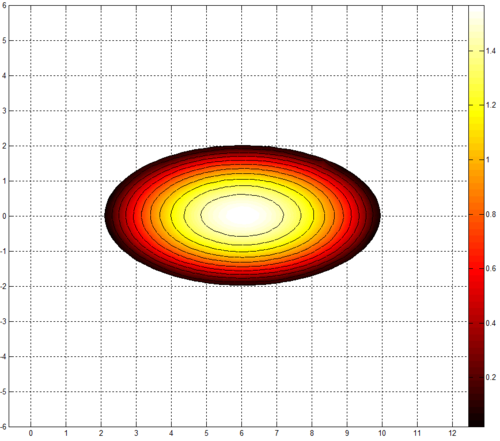February 24, 2014
More donuts, with warm filling
Who can resist a donut-world? I got quite a lot of interest in my torus-Earth post.
Here is a neat article in forskning.no: En ring med jord omkring (in Norwegian). It has some nice illustrations, including a sunset video (which just runs a few times faster than realtime - those sunsets are quick).
Edit: Also, there is a very nice article by Martijn van Calmthout in de Volkskrant 22 Feb 2014, "Welkom op planeet Donut" about these worlds. I like the term "astrofantasie" for what I did.
Tectonics
One thing I have been thinking about is the heat distribution inside the planet. Since it is symmetric under rotation around its rotation axis there will not be any longitudinal heat flow (to a first approximation), so it can be viewed as an elliptical cylinder. If we assume a constant heat production due to radioactive decay and constant thermal diffusion, the temperature will be described by Poisson's equation. So if we assume zero temperature at the surface, we get the following rough internal distribution in Donut:
It is at first appearance not too strange, a hot core surrounded by cooler layers up to the crust. However, when we look at the contour lines we see something interesting: the thermal gradient is higher at the poles than at the equators. We should hence expect volcanism and other geothermal activity to be higher near the poles. Also, the crust will be thinner than near the equators.
This makes plate tectonics even more tricky. A thick plate near the rimward equator moving hubward will start to melt on the underside (the poles might be seen as two enormous, ring-shaped hotspots), plus the compressive effects of having to fit into a smaller east-west space. Crust generated near the poles will be thin and presumably also change when it moves rimward or hubward. Subduction of too thick equator crust near the poles will likely be more vigorous (because of extra gravity and its excessive thickness), while polar crust might be less likely to subduct and could hence fold... I think: I am not enough of a geologist to make a proper guess here.
